As Congress debates a reconciliation bill that would slash clean energy tax credits, the U.S. solar industry continues to break records. For the first time, solar photovoltaics accounted for more than 10% of total U.S. electricity generation in a single month.
According to the U.S. Energy Information Administration (EIA), solar provided 10.64% of all electricity generated in April. That’s a 26% increase over April 2024, and a 52% jump from April 2023, when solar’s share was just under 7%.
This surge comes after two years of historic deployment: roughly 40 GW of solar came online in 2023, followed by nearly 50 GW in 2024. The resulting 90 GW of added capacity expanded the national total to 236 GW by the end of last year, a 61% increase in just 24 months.
Solar first exceeded 1% of monthly U.S. electricity generation in March 2015.
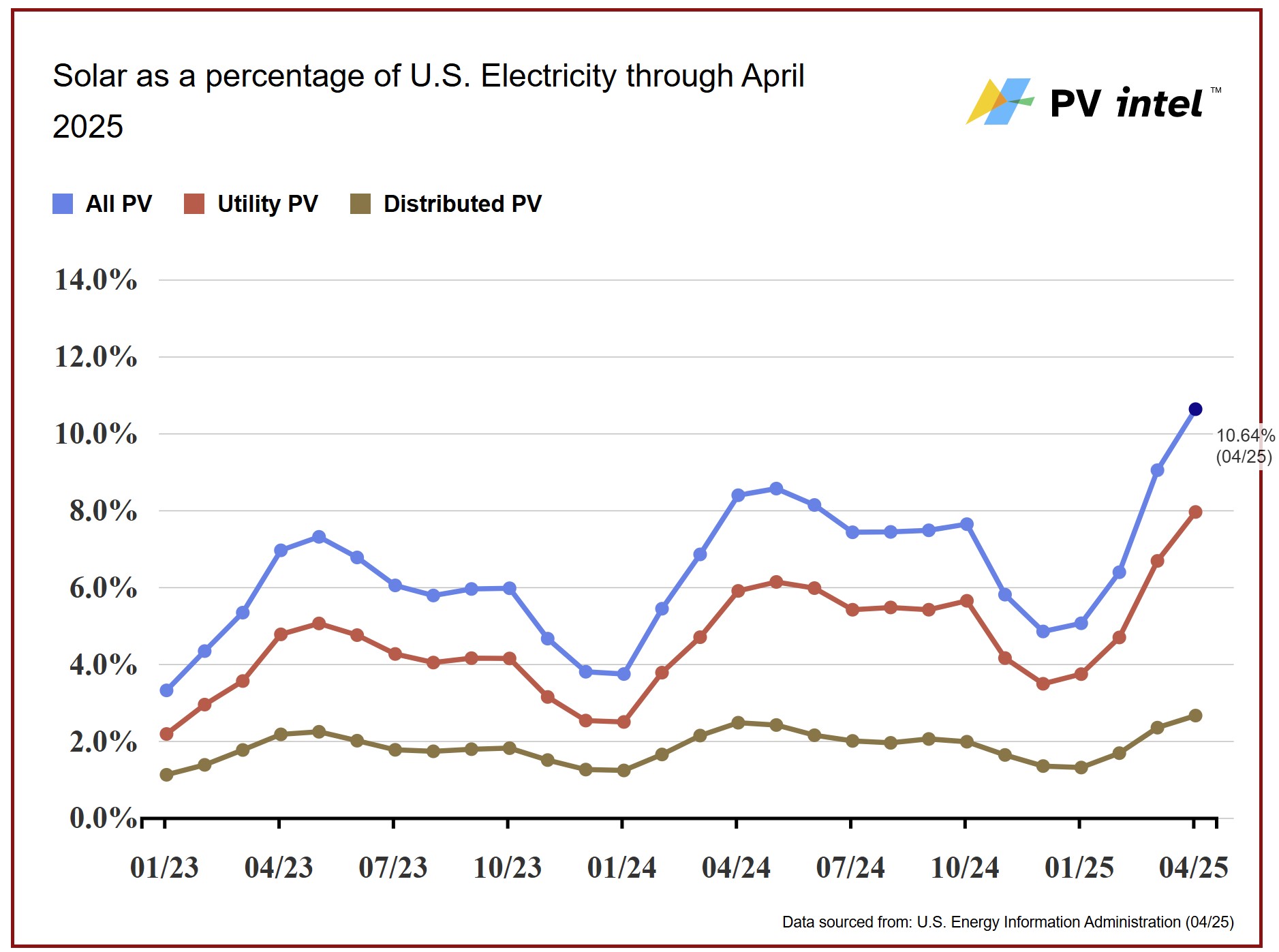
The April 2025 data, compiled by PV Intel from EIA records, reflects strong growth across utility-scale – upon over 34.6%. Over the past rolling 12 months, solar has supplied 7.35% of U.S. electricity, up from 5.87% a year earlier.
Solar generation typically peaks in April and May, just before rising summer temperatures drive up electricity demand and increase reliance on natural gas. April is typically the last strong month for wind production before seasonal patterns shift. Together, wind and solar supplied 24.5% of total U.S. electricity in April, even as wind output dipped slightly from March levels.
Carbon-free electricity, which includes solar, wind, hydro, nuclear and geothermal, climbed to 49.3% of all generation, falling just short of the 50% threshold some were projecting this April, primarily due to a drop in wind output.
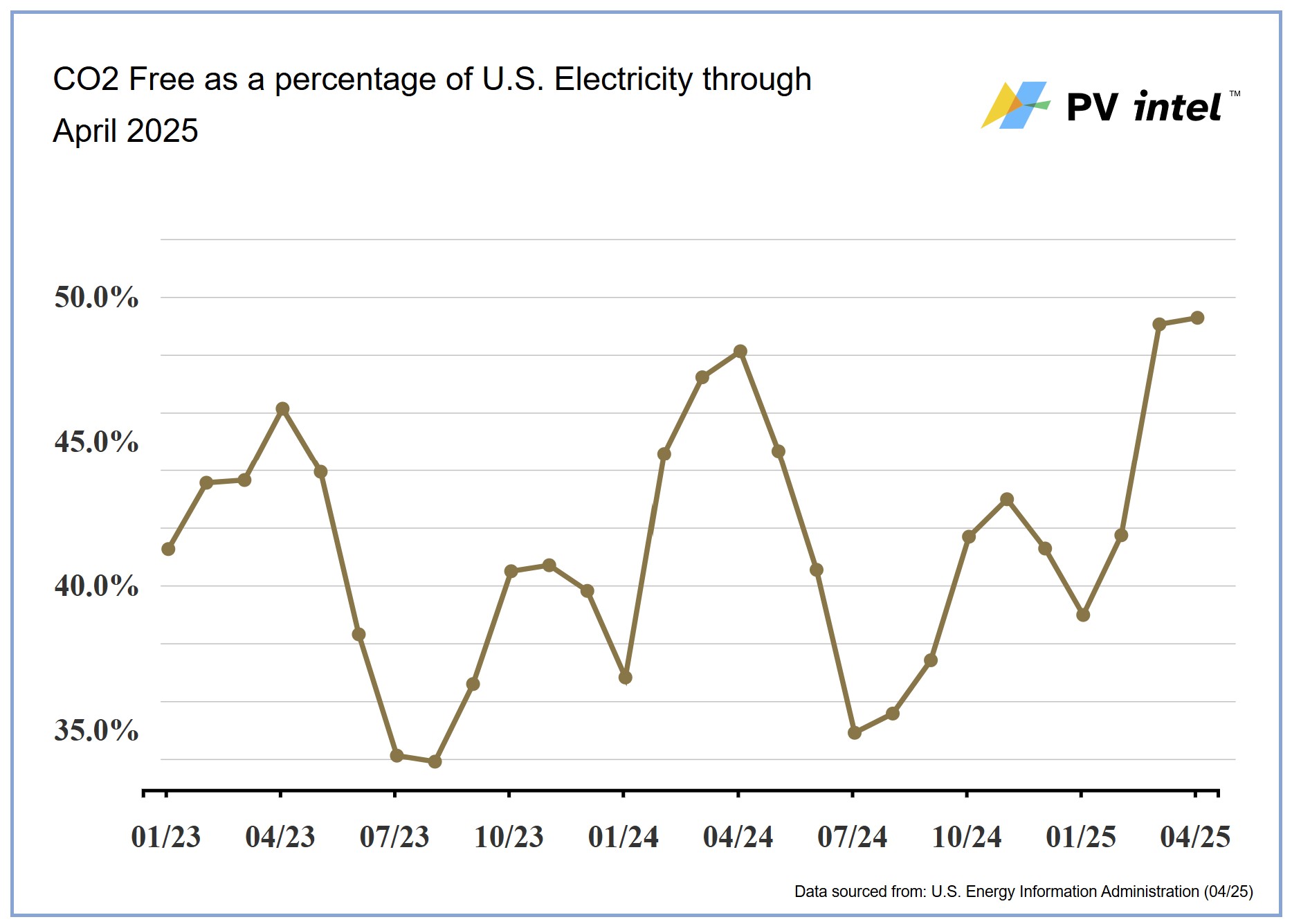
Even so, March and April marked a key inflection point: for the first time, fossil fuel generation fell below 50% – and it happened for two consecutive months.
The PV Intel chart above makes a distinction between “carbon-free” sources and “non-fossil” sources, the latter of which includes biogenic fuels such as biomass and landfill methane, which, while technically renewable per the EIA’s definitions, do emit carbon when burned.
California leads the nation in solar, both in total capacity and as a share of electricity generated. In April, the state produced 42% of its electricity from solar, marking its strongest month to date. May, typically California’s top solar month, could push that figure above 45%.
Texas, which has rapidly become the nation’s utility-scale solar capital, saw solar’s share rise from 8% in April 2024 to more than 11% this year, representing a 43% gain. Growth in Texas has been driven almost entirely by large-scale solar farms connected to ERCOT, as a result of the state’s lack of a formal net metering policy or other major distributed-solar incentives.
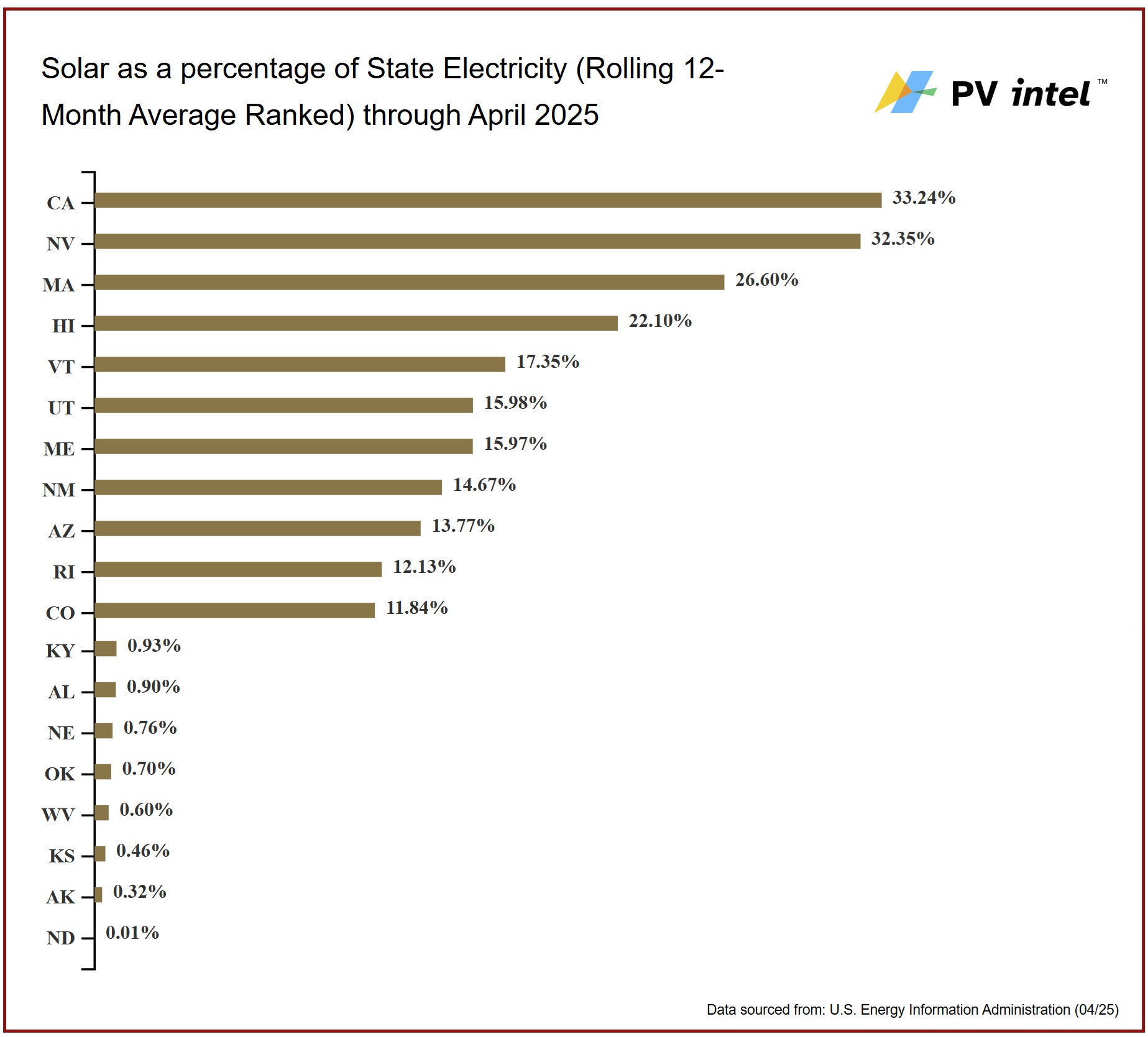
Across the nation, regional weather patterns had a noticeable impact on solar genera. Solcast reported that available sunlight in the Northeast was down 20% in April. Persistent cloud cover and heavy rain, fueled by warm, humid air trapped between the Rockies and the East Coast, dimmed solar output from New England through the central plains.
This content is protected by copyright and may not be reused. If you want to cooperate with us and would like to reuse some of our content, please contact: editors@pv-magazine.com.
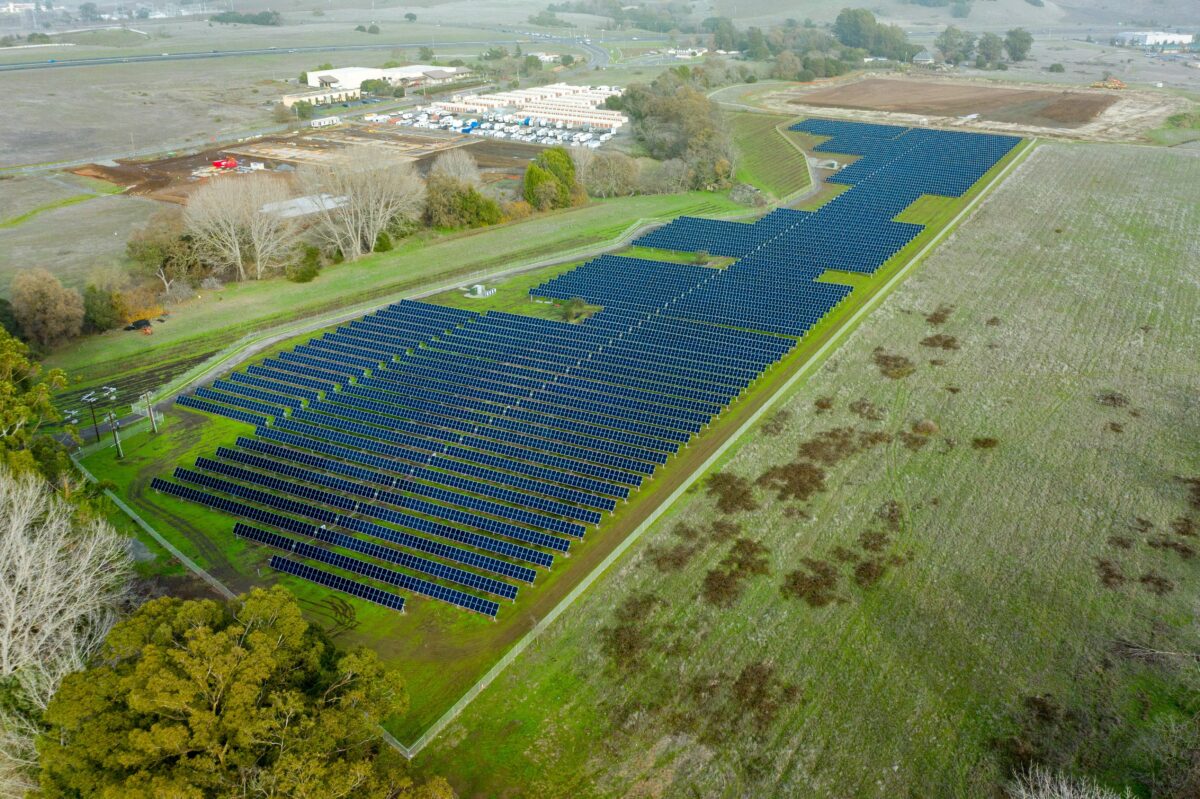
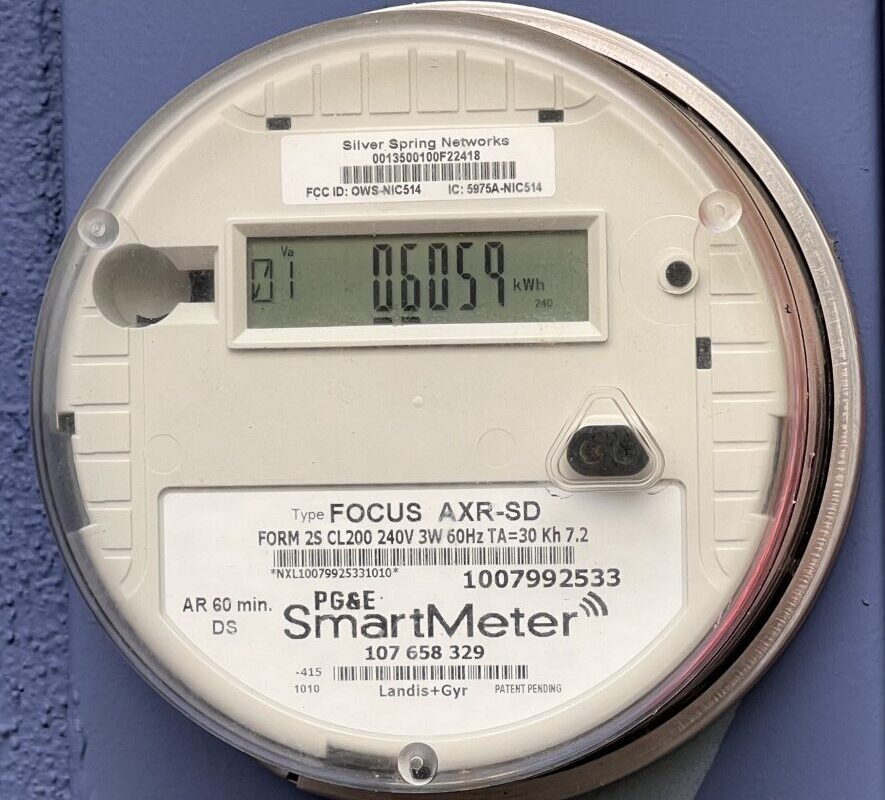

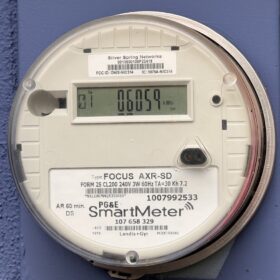
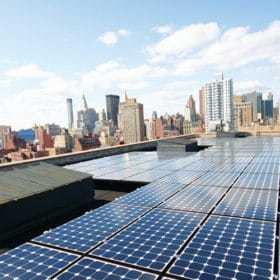
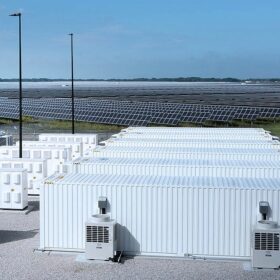


Keep it up. Our oldest son Eric son and I lobbied in D.C. on the Energy Bill, with Joe Mendelson for NWF. Our youngest son Nathan and I were present at The NWF headquarters in D.C. when Secretary of Interior Ken Salazar came to our office to thank NWF than NWF for being the leaders in fighting Global Warming. I have worked with NWF since 1990. I have retired from traveling due to health.